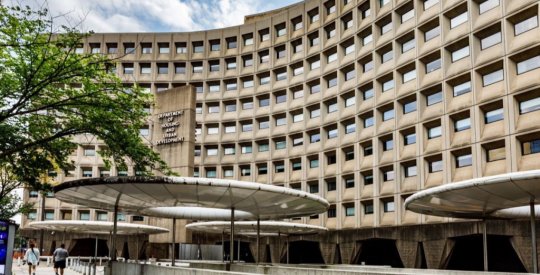What is shaping up as the deepest and longest recession since the 1930s will end in the second half of 2009, Wells Fargo’s senior economists predicted during the company’s annual economic forecast teleconference Thursday — and the housing sector may blaze the way, according to Dr. Scott Anderson, senior economist for Wells Fargo & Company (WFC). “One bright note is that the sector that led the economy into this morass is about to turn the corner, perhaps as soon as this summer, and will start to lead us out,” Anderson said in the report released by Wells Fargo Friday. The ongoing impact of $2 trillion in government stimulus, with other factors such as pent-up consumer demand and returning consumer confidence, will finally lead to a turnaround, and the third quarter of next year will be “better than expected” by many, said Dr. Jim Paulsen, chief investment strategist of Wells Capital Management. In a unique analogy, Paulson said “it’s like you’re at a cookout and you’re trying and trying to get your charcoal going and you keep squirting on lighter fluid and all of a sudden it goes ‘poof!'” Monetary Policy Augmented with Fiscal Policy But Dr. Eugenio Aleman expressed particular concern with the current method of injecting hundreds of billions of dollars into the economy through the financial sector, because it’s not helping those who need it most, he said. Those who can afford to do so, “will refinance, buy homes and consume,” Aleman said. “It will not help those who are struggling to make ends meet…because no financial institution is going to lend them money to buy a home, no matter what the interest rate is.” Wherein lies the need for the new administration to create jobs, that will boost household incomes — as they have pledged to do. Paulsen blamed “fear mongering” by government officials to persuade Congress to pass the $700 billion Troubled Asset Relief Program in the fall for the depth of our problems today. That, he said, “froze everyone in their tracks” and resulted in “economic paralysis.” The current job market is one of the worst in decades, with another 3.7 million jobs expected to be lost next year, Anderson said. He predicted Deflation will also occur, and gross domestic product will decline in the first two quarters before expansion resumes in the third quarter. Nonetheless, Paulsen predicted confidence will begin to return in the first half of next year, helped by “the consumer who waited to buy a car and is definitely going to need one.” Recovery and Long-term Issues Anderson said the U.S. government will provide the primary support for the economy in 2009. This will come in a stimulus package from the new administration with infrastructure spending and middle-class tax cuts, plus “natural stabilizers” such as unemployment benefits, food stamps and other welfare payments. The infrastructure spending will be too narrow to help everyone, he said – but the middle-class tax cuts will offer more sustained consumer spending than recent one-time stimulus checks. The economists said the long-term effects of government spending are likely to result in tax increases and inflation. “The U.S. government has plenty of ‘cheap’ financing to help the economy forward,” Aleman said. “This is going to be very expensive and will require higher taxes in the future, but the alternative is even worse.” “For the foreseeable future, we can expect economic growth to remain anemic – or until markets forget about past mistakes and start building the structure for the next big bubble,” Aleman said. Write to Kelly Curran at [email protected].
Most Popular Articles
Latest Articles
FHA loan limit increases to $524,225 in 2025
The FHA limits increased for 2025, but at a slightly lower level than observed one year ago owing to the pace of home price appreciation.





